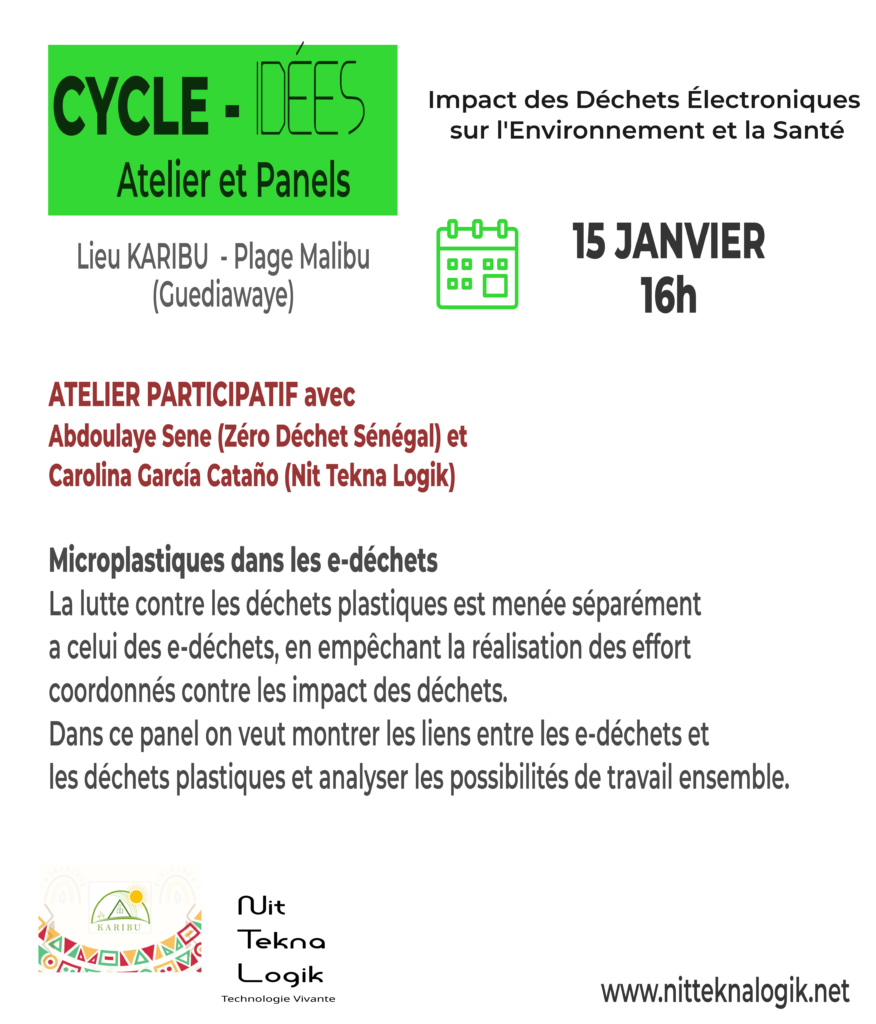
Microplastics in e-waste
On Wednesday 15 January, we organised a workshop on microplastics with Abdoulaye Sene and Carolina García Cataño.
In this workshop, we wanted to tackle the issue of microplastics because they are little known and yet they have a major impact on the environment and health.
We ended up talking about a continent of plastic in the Pacific Ocean, i.e. a floating surface of plastic weighing over 80,000 tonnes. Plastics after degradation, will become microplastics (pieces of plastic less than 5 mm in size) and that will gradually populate every corner of the planet.
Compared with larger plastic objects, microplastics are more likely to cause harmful effects due to their greater likelihood of being ingested by organisms and therefore entering the food chain, and their larger surface area, facilitates leaching and encourages interaction with other compounds.
If we also look at electronic waste, we see that microplastics contain traces of the heavy metals found in electronic devices, making them more toxic.
Microplastics in e-waste are colonised by specific bacteria and can alter species diversity and soil properties, including water evaporation, bulk density and microbial activity.
To date, information on the impact of microplastics is still scarce, but partial studies are alerting us to their harmful impact.
At the end of the workshop, we opened a space for reflection on the reasons behind the creation of all this electronic waste, which ends up releasing microplastics, and on how to raise public awareness on this subject.